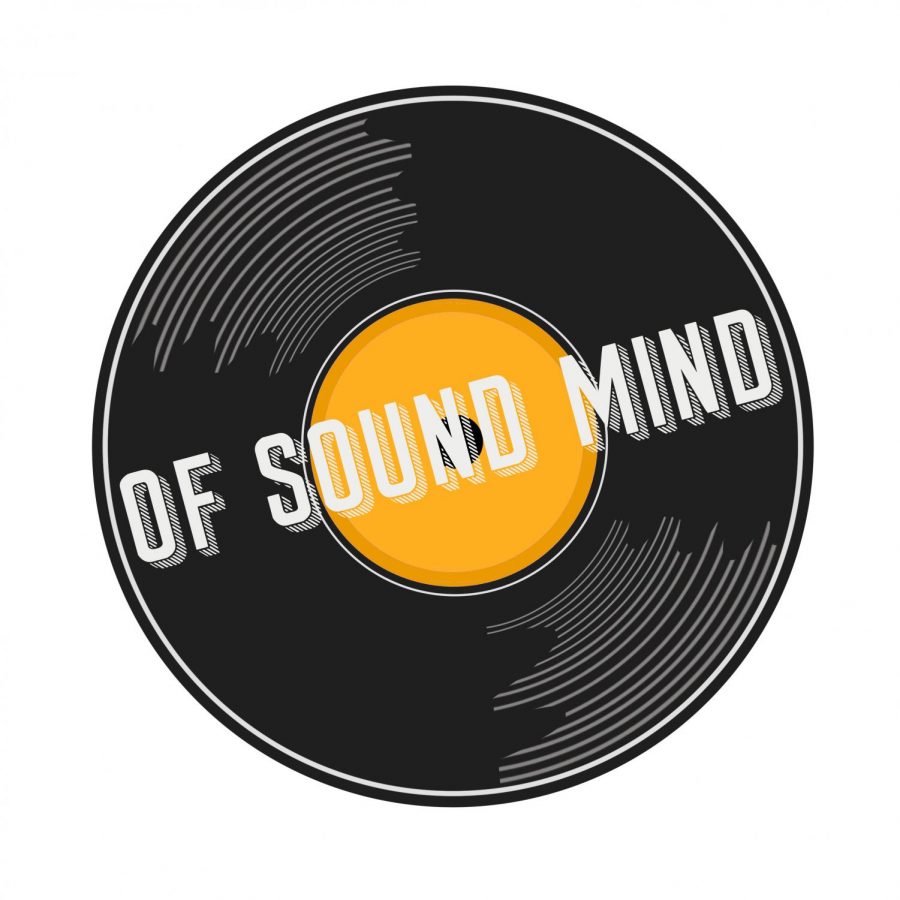Of Sound Mind | Low’s “Hey What”
Of Sound Mind is a biweekly blog about new albums, old albums, forgotten albums, overrated albums and any other type of listening experience from senior staff writer Lucas DiBlasi.
September 19, 2021
A cacophony of guitars and synthesizers swirls around your head before collapsing into a rhythmic, distorted backbeat. A strong voice comes in, tightly mimicked by a chorus of harmonies.
And just when the song seems to crest in intensity, it decays into a minutes-long meditative outro full of more synthesizers and ghostly voices.
The legendary Minnesotan indie rock band Low released their new album, “Hey What,” on Sept. 10. On the new release, electronic instruments are pushed to their limit and distorted noises are arranged into minimalist ambiences to create a backdrop for the excellent vocal performances. The result is a highly innovative album that couldn’t have been made by anyone else.
Low has been a band for nearly 30 years, and while additional members have come and gone, the core of the band has stayed the same in married couple Alan Sparhawk and Mimi Parker. The duo founded the band in Duluth, Minn. in 1993, and soon garnered an underground following in Minnesota and beyond due to their willingness to go against the grain.
Since the beginning, Parker and Sparhawk favored sparse, minimalist arrangements and slow-tempoed songs in addition to the distinctive harmonies they add to each others’ voices. But their most recent album before “Hey What,” 2018’s “Double Negative,” saw them adding heaps of electronic distortion to their sound. The result was stunning, a “clear career highlight for a band that’s never made a bad album.”
“Hey What” continues where “Double Negative” left off, with plenty of vocals that sound like they’re coming out of a blown-out speaker over glitchy synths. Distortion — the warped, blown-out sound that brings to mind rock ‘n roll and more heavy genres like metal — is usually considered loud due to its origins, but Low finds a way to flip that cultural narrative.
Electric guitar players in blues and rock ‘n roll bands first brought distortion into the mainstream. There are several stories of early players with faulty wiring or partially-destroyed amplifiers realizing they liked the distorted sound they’d stumbled on.
Once innovative players discovered they could reliably create distorted sounds by turning their amplifiers up louder than they were originally meant to, electric guitar players ushered in the era of loud, distorted rock. But with advancements in guitar pedals, synthesizers and production techniques, distortion doesn’t necessarily need to be loud anymore, and Low uses that new flexibility deftly.
There are plenty of moments on “Hey What” — like in the songs “I Can Wait” and “All Night” — where Low distorts a sound and then turns it down or makes it sound far away, leaving it to churn in the background. Paired with synthesizers, this creates an eerie ambience for Sparhawk and Parker to sing over, like listening to a metal band playing in a neighbor’s basement down the street.
But while Low’s music is heavy, it doesn’t feel indulgent. In fact, many of the songs on “Hey What” feel remarkably sparse and hollow. The songs are often repetitive and ambient, slowly shifting in unexpected directions. BJ Burton — the album’s producer, who has produced some of the best albums of the last decade — is apparently “fascinated with the idea of the extreme possibilities of the digital world colliding with randomness.”
The result is one of the most new-sounding, innovative albums I’ve heard in a long time. The songs build up a sense of tension, with Parker and Sparhawk singing about their decades-long marriage on “Don’t Walk Away” and existential exhaustion on “Hey.”
But the tension is never released. Just as poppy melodies seem about to blossom into some kind of climax, the songs shift and fade. On “Times Like These,” Low begins with a chorus that could easily fit into a radio-ready song, but then suddenly crush their voices to bits with distortion. Then, the song shifts into ambient synthesizers for several minutes before fading out.
Due to this unreleased tension, minimalism and rampant use of distortion, the album can be quite a daunting listen on the first pass. The songs can feel slow and pointless at one point and grating at another. But “Hey What” isn’t meant to be enjoyed like a pop album — it’s meant to be a meditative experience.
While it may be too experimental for some people’s taste, the album is a fresh, encapsulating experience on its own. When you’re forced to stop and listen to churning synthesizers that sound like they’re playing in a huge deconsecrated church — because that is where they’re recorded — you get transported to a headspace that most music doesn’t touch.
“Hey What” can make you feel a burning angst followed by an inward-looking despair. It can make you feel alone but not lonely, or lonely but not alone. When there’s so much space to read your own emotions into the music, you get to stare into the piece of art and realize it’s a mirror.
If you have the inclination to get acquainted with it, “Hey What” can offer songs that pair nicely with those moods you don’t have words for or those times when uplifting music doesn’t quite cut it. It may be a projection based on the album cover, but for me, “Hey What” pairs well with cloudy, late-afternoon Pittsburgh, as well as late-night walks home. If you’re at all a fan of strange, meditative music — or its opposite, distorted guitars — give “Hey What” a listen.
Lucas DiBlasi writes primarily about politics, music and crises. Feel free to email him at [email protected].








